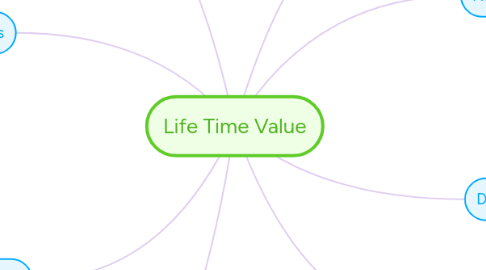Life Time Value
by Charlotte Jobson


1. Historical or Projective LTV
1.1. Historical
1.1.1. Simpler, based on known facts and historical data, easier to tie to financial statements
1.2. Projective
1.2.1. Uses previously observed trends and projects them into future use, useful if historical data doesn't exist
2. Calculating Historical LTVs
2.1. Identify a cell
2.2. Record sales revenue for this group each year
2.3. Calculate costs for each period
2.4. Discount each profit figure to arrive at the NPV for each period
3. How We Use LTVs
3.1. Planning customer acquisition strategies
3.2. Allocate acquisition funds
3.3. Select products for acquisition offers
4. Factors Affecting LTV
4.1. Method of recruitment, medium, geo-demographic
5. What and Why
5.1. Total value of all future contributions to profit we expect from a given customer - the value to us over their lifetime as a customer
5.2. Can help decide how much to invest in recruiting them
5.2.1. Making this judgement on a single sale = may invest too little to grow the business; ignore differences in longevity and quality of different customers
